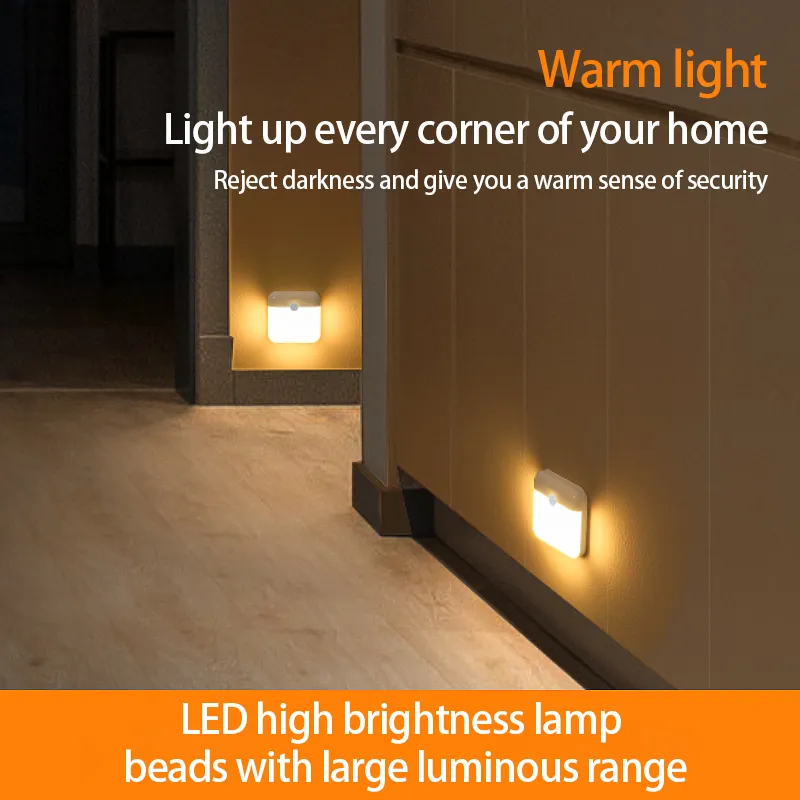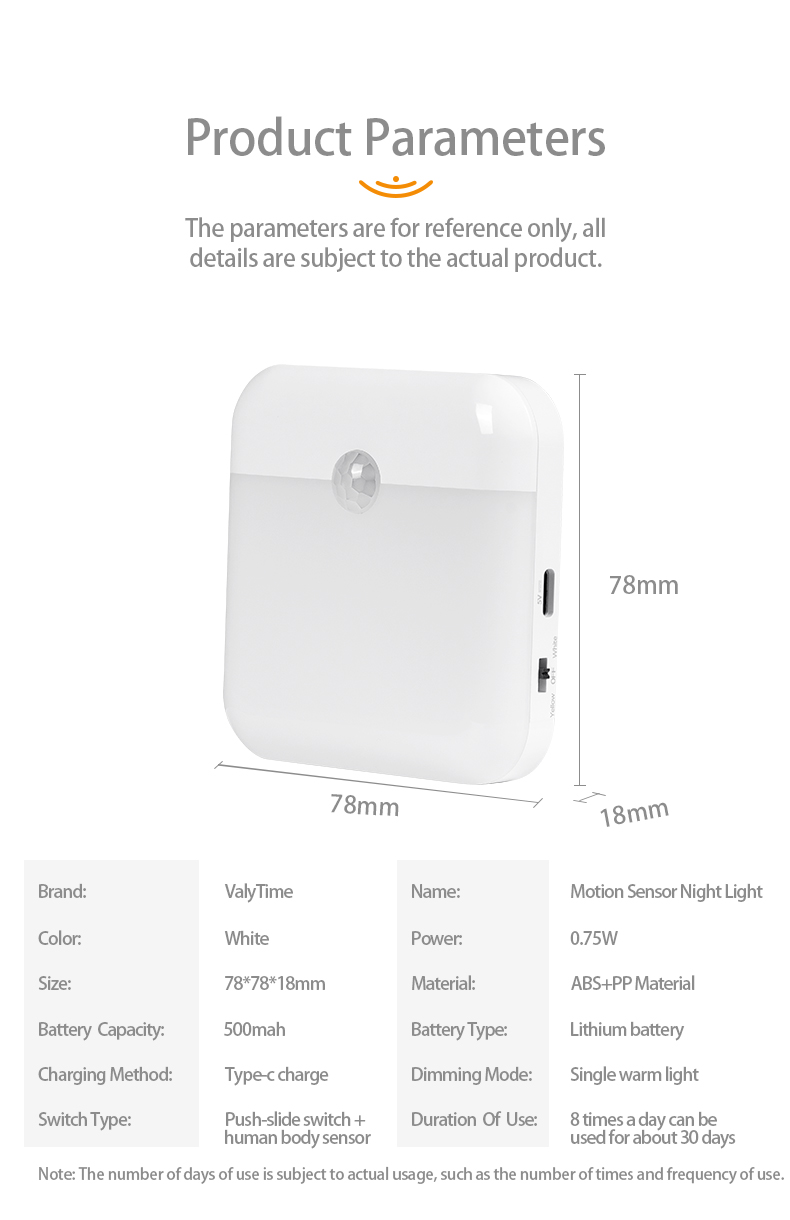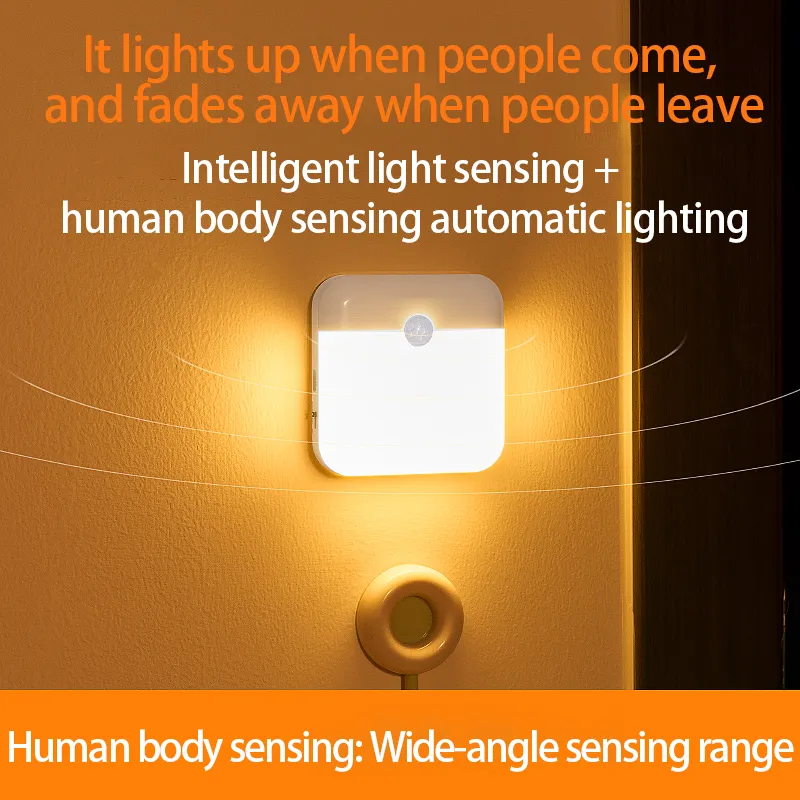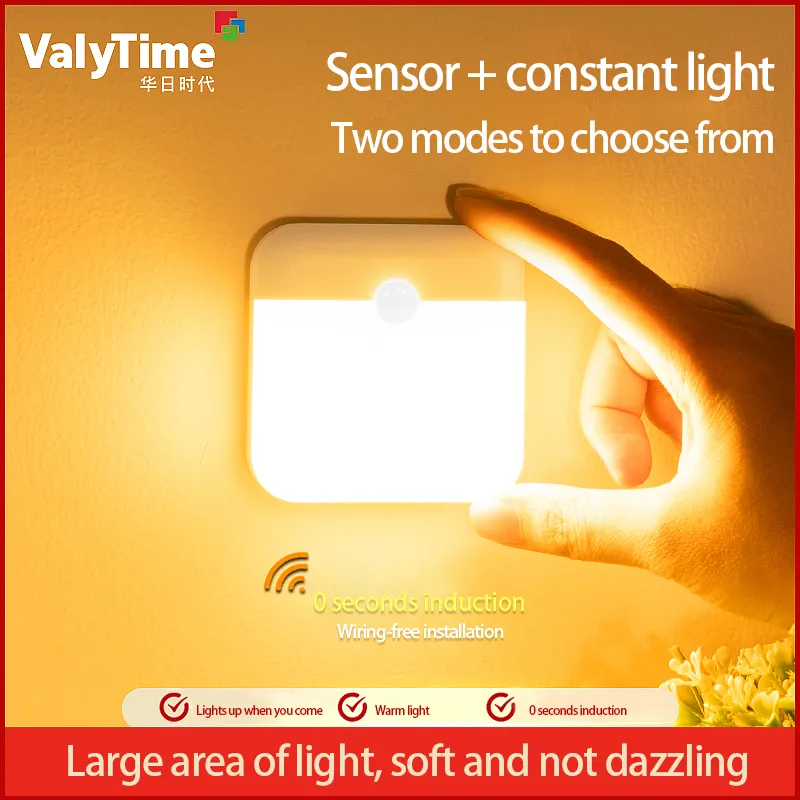Where is the best place to place a motion sensor night light?
As an intelligent lighting product, motion sensor night light has been widely used in various fields such as homes, offices, and public places. Its biggest feature is that it can automatically sense human movement and turn on or off the light according to changes in the environment, which greatly improves the convenience of use and energy saving. Whether in bedrooms, corridors, bathrooms, or other places where night lighting is required, the reasonable arrangement of motion sensor night light can provide a better lighting experience.
However, although the use of motion sensor night light is very convenient, how to choose a suitable location to place it to ensure that the lamp can work normally and effectively provide the required lighting is a question that needs to be seriously considered.
This article will discuss the question of "Where is the best place to place a motion sensor night light?" and analyze it from multiple angles such as the working principle of motion sensors, usage scenarios, and environmental factors to help consumers make the best choice in daily use.

What is the working principle of motion sensor night light?
1.1 Principle of motion sensor
A night light motion sensor is a device that can sense changes in the surrounding environment. Commonly used sensing technologies include passive infrared (PIR) technology, ultrasonic technology, and microwave technology. Among them, PIR sensor is the most common. It determines whether someone enters the sensing area by sensing the change of infrared radiation emitted by the human body. When a person enters the detection range of the sensor, the sensor detects the change of radiation and triggers the switch of the lamp, thereby lighting the night light.
Unlike the traditional switch control method, the motion sensor night light has an intelligent sensing function that can automatically adjust the lighting according to the user's activities. It not only brings a more efficient lighting experience, but also saves energy, because the night light only works when there are people, and automatically turns off when there are no people, avoiding unnecessary waste of electricity.
1.2 Working range of motion sensor
The working range of the night light motion sensor is an important factor to consider when placing it. Each sensor has its own detection range, which is usually expressed in angle and distance. The angle range of the sensor is usually between 90° and 180°, and the detection distance is usually 3 to 6 meters. Therefore, when choosing a suitable location to arrange the motion sensor night light, it is necessary to consider whether the working range of the sensor matches the size of the space to ensure that the sensor can cover the area that needs to be illuminated.

Where is the best place to place the motion sensor night light?
2.1 Place in corridors or aisles
Corridors and aisles are one of the most commonly used areas in homes and offices, especially when used at night, which is often inconvenient due to insufficient light. At this time, placing a motion sensor night light can automatically light up when someone passes by, bringing good lighting effects.
Placement location suggestions:
● Wall installation: Install the motion sensor night light on the wall of the corridor or aisle, preferably between 1.5 meters and 1.8 meters from the ground. This height ensures that the sensor can detect the movements of people passing by, and can avoid being triggered by unnecessary objects or moving objects on the ground due to the sensor being too low.
● Close to the entrance: If the corridor or aisle is long, the motion sensor night light can be placed near the entrance. In this way, when people enter or leave from the door, the light can be turned on in time to avoid users groping in the dark.
● Avoid conflicts with other light sources: Pay attention to the installation location to avoid conflicts between the motion sensor and other surrounding light sources. Because motion sensors generally respond to changes in ambient light, if the night light is installed near a window or a strong light source, it may cause the sensor to misjudge.
2.2 Place in the bedroom
The bedroom is the most private place in the home, and the lighting used at night should be gentle and soft. The application of motion sensor night light in the bedroom can provide users with a more comfortable and convenient sleeping environment, avoiding manual switching of lights when sleeping or touching switches when walking.
Placement location suggestions:
● Near the bedside: Installing the motion sensor night light near the bedside or on both sides of the bed can ensure that the lamp can automatically light up when the user gets up or walks around the bed, providing sufficient lighting and reducing the inconvenience caused by darkness.
● Avoid direct illumination of the bed: Although the motion sensor can provide convenient lighting, it is not advisable to install it directly above the bed or directly illuminate the bed. Excessive light may affect sleep quality. The ideal way is to arrange it at the head of the bed, the bedside or the corner of the wall to avoid direct light into the eyes.
● Corner or window: If the bedside position is not suitable for installing a sensor light, you can also consider placing the motion sensor night light in the corner or window of the bedroom, which can avoid disturbing sleep and provide moderate lighting when walking.
2.3 Place in the bathroom
The bathroom is one of the most frequently used areas in the home, especially at night. Since most bathrooms do not need to keep the lights on continuously, the motion sensor night light can help users easily enter the bathroom at night and avoid unnecessary manual switch operations.
Placement suggestions:
● Near the door: The entrance to the bathroom is usually the first reaction point. Installing the sensor night light near the door can automatically light up when the user enters. When the user leaves, the light will also automatically go out, reducing unnecessary energy consumption.
● Avoid humid areas: Since the bathroom is a place with heavy humidity, it is recommended to choose motion sensor lamps with waterproof functions and avoid installing the lamps in too humid places, such as shower areas or around bathtubs.
● Moderate height from the ground: The installation position of the motion sensor night light should be moderate from the ground. It is generally recommended to install it between 1.5 meters and 1.8 meters from the ground, so as to ensure that the motion sensor can sense the movements of people entering the bathroom.
2.4 Place on the stairs
Stairs are the most likely place for accidents at night, especially in low light conditions. The motion sensor night light is installed at a suitable location on the stairs. It can automatically light up when the user passes by, providing sufficient lighting to ensure the safety of the user.
Placement suggestions:
● Each corner of the stairs: If the stairs have multiple corners, a motion sensor night light can be installed at each corner to ensure that each area of the stairs is adequately illuminated to avoid falls caused by darkness.
● Near the stair handrail: Since the working range of the motion sensor night light is relatively fixed, installing the lamp near the stair handrail can ensure that the light covers the entire stair area.
● Appropriate height from the ground: The installation of the motion sensor night light on the stairs should be adjusted according to the structure of the stairs. It is usually installed at a position of 1.5 meters to 2 meters from the ground to ensure that the sensing range of the motion sensor covers every step of the stairs.
2.5 Placement at the entrance and corridor
For some larger or complex homes, offices and other spaces, the installation location of the motion sensor night light should be placed at the entrance or important passage area. This ensures that the lighting can be switched freely when transitioning from one area to another, preventing users from getting lost in the dark.
Placement suggestions:
● Entrance: Installing at the entrance can ensure that the light will automatically turn on as soon as you enter the room, providing a good lighting experience.
● Corridor corners: In long corridors, it is recommended to install sensor night lights at each corner or intersection to ensure that activities in any area can be sensed in time and the lights will automatically turn on.

What are the factors that affect the placement of motion sensor night lights?
3.1 Space size and layout
The placement of motion sensor night lights should be determined according to the size and layout of the space. For example, corridors and bathrooms are relatively small, and night lights can be installed in corners or near entrances, while in larger spaces, sensor lights need to be installed according to the areas that need to be illuminated.
3.2 Frequency of use and purpose
Considering the frequency and purpose of use in different areas, the choice of placement should also be different. For example, the sensor night light in the bedroom focuses more on providing gentle light when the user is sleeping, while the sensor lights in the corridor and stairs focus more on providing clear and bright light sources.
3.3 Ambient light and obstructions
Other light sources or obstructions in the environment can also affect the effect of motion sensors. When choosing a placement, avoid installing the night light in direct sunlight or in areas blocked by items such as furniture.

Looking for a reliable LED lighting supplier?
Huari Lighting Co., Ltd, founded in 1996, specializes in manufacturing premium LED lighting products. With a monthly production capacity exceeding 1 million units, we supply a comprehensive range of LED lighting fixtures including downlights, ceiling lights, panel lights, track lights, and more. Our products are certified with CE, RoHS, and ERP standards, ensuring top-notch quality. As a professional factory and manufacturer based in China, we provide competitive wholesale prices and custom lighting solutions.
